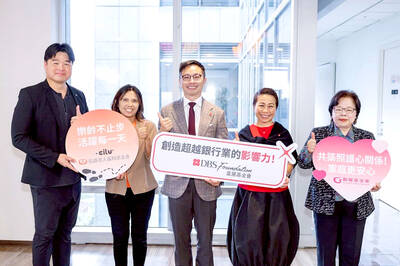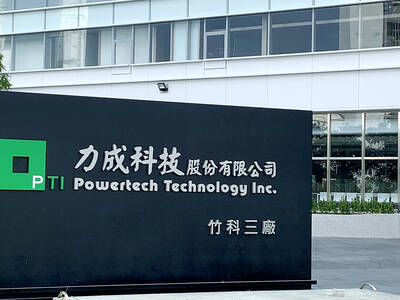India plans to cap the commissions app-based taxi aggregators such as Uber Technologies Inc and home-grown Ola earn on rides to a maximum 10 percent of the total fare, according to a draft proposal seen by Reuters, a move industry experts warned would hit revenue and operations.
Such a law would be another blow to San Francisco-based Uber after the ride-hailing firm was stripped of its license to carry paying passengers in London on Monday for the second time in just more than two years over a “pattern of failures” on safety and security.
The Indian government has proposed reducing the commission from the about 20 percent of the total fair charged at present, the 23-page document titled Central Guidelines for Aggregators says.

Photo: Reuters
The government has also proposed stricter safety checks for drivers and wants to cap their working hours at 12 per day, amid fears long shifts are putting passenger safety at risk.
The Indian Ministry of Road Transport and Highways did not respond to a request for comment outside working hours. Uber and Ola also did not respond.
The proposal could still change, but industry experts say it could halve Uber and Softbank-backed Ola’s revenues from rides.
India accounts for an estimated 11 percent of Uber’s global rides annually.
“The 10 percent [commission] is not viable, it has to be something around 20 percent,” former Ola corporate president of new initiatives Joy Bandekar said, adding that the system could not survive at the lower rate.
India is a key growth market for ride-hailing companies as people seek to avoid driving themselves on its congested roads.
To boost safety, the proposal says taxi companies should set up a control room that can track vehicles and conduct a facial recognition check of drivers every three hours.
The companies should also provide insurance for drivers and riders, and store all the data collected on the app on a local server for two years, it says.

The DBS Foundation yesterday announced the launch of two flagship programs, “Silver Motion” and “Happier Caregiver, Healthier Seniors,” in partnership with CCILU Ltd, Hondao Senior Citizens’ Welfare Foundation and the Garden of Hope Foundation to help Taiwan face the challenges of a rapidly aging population. The foundation said it would invest S$4.91 million (US$3.8 million) over three years to foster inclusion and resilience in an aging society. “Aging may bring challenges, but it also brings opportunities. With many Asian markets rapidly becoming super-aged, the DBS Foundation is working with a regional ecosystem of like-minded partners across the private, public and people sectors

BREAKTHROUGH TECH: Powertech expects its fan-out PLP system to become mainstream, saying it can offer three-times greater production throughput Chip packaging service provider Powertech Technology Inc (力成科技) plans to more than double its capital expenditures next year to more than NT$40 billion (US$1.31 billion) as demand for its new panel-level packaging (PLP) technology, primarily used in chips for artificial intelligence (AI) applications, has greatly exceeded what it can supply. A significant portion of the budget, about US$1 billion, would be earmarked for fan-out PLP technology, Powertech told investors yesterday. Its heavy investment in fan-out PLP technology over the past 10 years is expected to bear fruit in 2027 after the technology enters volume production, it said, adding that the tech would

YEAR-END BOOST: The holiday shopping season in the US and Europe, combined with rising demand for AI applications, is expected to drive exports to a new high, the NDC said Taiwan’s business climate monitor improved last month, transitioning from steady growth for the first time in five months, as robust global demand for artificial intelligence (AI) products and new iPhone shipments boosted exports and corporate sales, the National Development Council (NDC) said yesterday. The council uses a five-color system to measure the nation’s economic state, with “green” indicating steady growth, “red” suggesting a boom and “blue” reflecting a recession. “Yellow-red” and “yellow-blue” suggest a transition to a stronger or weaker condition. The total score of the monitor’s composite index rose to 35 points from a revised 31 in August, ending a four-month

RUN IT BACK: A succesful first project working with hyperscalers to design chips encouraged MediaTek to start a second project, aiming to hit stride in 2028 MediaTek Inc (聯發科), the world’s biggest smartphone chip supplier, yesterday said it is engaging a second hyperscaler to help design artificial intelligence (AI) accelerators used in data centers following a similar project expected to generate revenue streams soon. The first AI accelerator project is to bring in US$1 billion revenue next year and several billion US dollars more in 2027, MediaTek chief executive officer Rick Tsai (蔡力行) told a virtual investor conference yesterday. The second AI accelerator project is expected to contribute to revenue beginning in 2028, Tsai said. MediaTek yesterday raised its revenue forecast for the global AI accelerator used